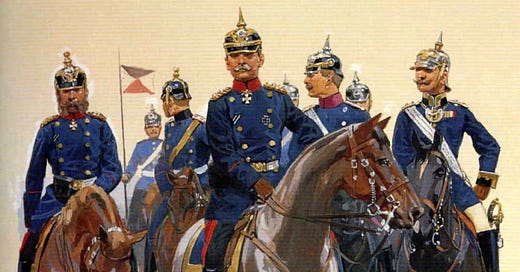In 1894, an officer of the US Army wrote detailed description of the military forces of the German Empire. This treatise included, among many other things, an explanation of the institution of the administrative alter ego of the famous General Staff, an organization called the ‘Higher Adjudantur’.
The members of the Higher Adjudantur are selected from those officers who have passed through the War Academy but have not entered the General Staff, or who, as battalion or regimental adjutants, have shown special aptitude for the duties pertaining to it. After serving in the Adjudantur for from three to four years, during which they wear their regimental uniform, they return to another regiment of their arm, generally with an advance in relative rank, which is effected by the dating back of their commissions by a period varying from one to two years. After a two or three years' tour of duty in the line, they become again eligible for detail as adjutants of higher commands.
While adjutants these officers are not borne on the strength of any regiment, but are provided for as such in the appropriation act (Etat) . The brigade and division have each one adjutant, each corps has two (sometimes three) adjutants. The brigade adjutant is either a first lieutenant or captain, the adjutants of divisions and corps are captains or majors.
The following is an outline of the duties of adjutants:
Orders, guard, garrison, and regimental duties; returns and reports; personal affairs of officers and men; appointments, promotions, transfers, furloughs, and discharges; recruiting; Landwehr business; formation of new organizations; pensions; remounts; military police; arms and ammunition, and all purely military staff duty not falling to the share of the General Staff.Source: Theodore Schwan Report on the Organization of the German Army (Washington: Government Printing Office, 1894) pages 69-70
For Further Reading:
.








Less is more